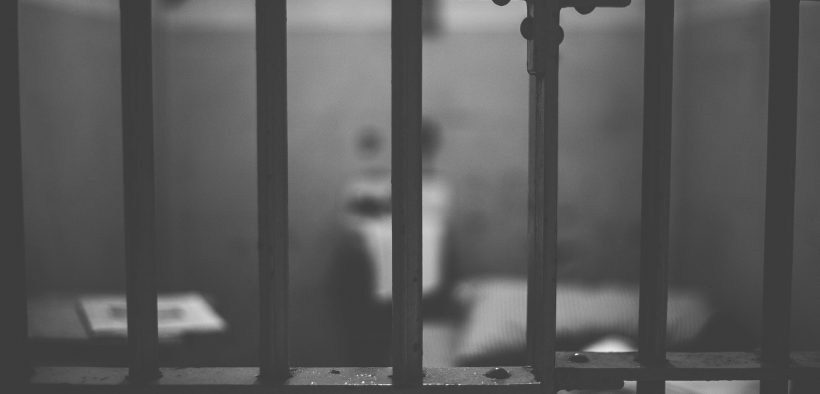Jail Ministries Find Ways to Reach Incarcerated Amid COVID

Gary Skinner illegally transferred funds between businesses he ran in Dayton, Ohio, ripping off a friend and business partner for nearly $400,000. Convicted of aggravated theft and sentenced to four to 15 years in prison, he lost everything: career, family, home, cars, self-esteem, and freedom.

Alone in his cell, he alternated between sorrowing over his sins and blaming his incarceration on his attorney, the judge, and the parole board that refused to lessen his sentence.
Then he says God spoke to him. It was a familiar voice he first heard at age 10 when he felt called to the ministry—a call he had ignored. But this time he listened as the voice told him to “get over it,” acknowledge his crimes, take full responsibility for his actions, and seek healing, restitution, and reconciliation through conversations, prayer, and study with mature Christian believers who visited and guided him.
“As crazy as it sounds, I now look at my incarceration as a gift,” says Skinner, who now runs Gary Skinner Ministries in Colorado Springs. “I was looking at life the wrong way. I had my priorities messed up. I don’t believe God sent me to prison, but I needed to change the way I thought.”
Skinner has entered jails and prisons for years to minister. “When I’m at prison, I feel like I’m at home,” he says. “We connect, we laugh, and I’m able to communicate the Gospel and what God has done for me. I love what I do.”
For decades, jail and prison ministry has largely been based on the “captive audience” model. Incarcerated people like Gary Skinner were sitting in cells, ripe for a change in life, and were accessible by volunteers.
America incarcerates people at higher rates than any other country, and as the country’s inmate population has grown to more than two million people, major prison ministries like Prison Fellowship and Kairos Prison Ministry International, both founded in 1976, have followed that model.
But COVID dealt a significant blow to the captive audience model, making some men and women inaccessible for two years. That’s why some say a different model—a staff model—makes sense.
“The chaplain is in the house”
Good News Jail & Prison Ministry was founded in 1961 after Bible college student Bill Simmer went to the Fairfax County, Virginia, jail to pay a small fine. He noticed the jail had four cells, and asked if anyone ever came to minister to the prisoners. When he was told nobody did, he started doing so himself. From this work came a vision of placing Christian chaplains in facilities.
Good News placed its first chaplain in the Fairfax County jail, which now has more than 1,000 cells. From there, the ministry grew by word of mouth as wardens in additional cities and states reached out to receive chaplains.
Access to MinistryWatch content is free. However, we hope you will support our work with your prayers and financial gifts. To make a donation, click here.
Today, the $8 million ministry is the world’s largest independent provider of jail chaplains, with 76 chaplains across the U.S., and another 330 chaplains in more than 50 countries overseas. Even as COVID has closed facilities to volunteers, these chaplains remain present to serve people day-in and day-out.
Chaplains have served prisoners for centuries, says Jon Evans, who is Good News’s third president in its 61-year history. The son of missionaries who worked with the Pocket Testament League in Brazil, his “ministry heartbeat” would lead him to start giving Bible studies to U.S. inmates as a Bible college student.
At first fearful, he thought he would be killed. But he lived, and soon grew to love the men and women he served. “As I sat across from what were typically younger men, I recognized that they were not a lot different than me, even if we grew up in different circumstances.”
Today’s prisoners are tomorrow’s neighbors
Evans cites both spiritual and practical reasons for the continued support of jail ministry. Some believers see Jesus teaching in Matthew 25 (“I was in prison and you came to visit me”) as a command to serve “the least of these.” Others say jail ministry is a practical way to reach men and women who will eventually be set free and released into society.
“The quarter of a million people who are locked up in federal prisons stay there for years,” says Evans, “but 95% of the estimated two million American inmates in state, county, and city facilities will be released one day.
“It comes down to what kind of neighbors would you like to have,” he says. “Thirty years ago, punishment of offenders and protection of society was the objective. Now, we have more of a rehabilitative mandate. We need to prepare these people for reentry, because they’re coming home one day.”
Evans says work with the incarcerated is an urgent necessity in the United States, a country that jails people at higher rates than any other country.
“The reality of mass incarceration shows we have a flawed justice system,” Evans said, “even though it’s the best in the world. But it is still flawed, which has big implications for our society, our economy, and our families. But Christ can change their lives. We’ve seen illustration after illustration after illustration of that.”
MinistryWatch contacted Prison Fellowship for this article. Over a period of two weeks, the ministry’s busy spokesperson initially agreed to answer questions in an interview, then offered to have the questions answered by PF’s CEO in an interview, which was scheduled and then canceled. He then requested written questions, and offered to answer the questions himself, before declining to do so. Next, he offered to have the written questions answered by the CEO, before finally withdrawing that offer.



